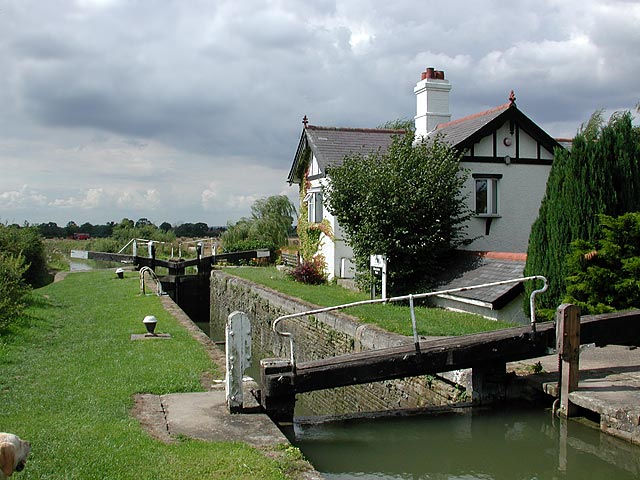
How does a canal lock work? By using gravity to increase the amount of water in the canal and rise the boat.
There are two different reasons why canals need locks. The first is that canals are bodies of running water and so they have an upstream and a downstream, giving them a current. They also follow the terrain of the land, which means they go downhills. A boat on a canal could follow the canal going downhill, but the water would get very fast. However, no boat would be able to fight against the current to get back up the hill. Something was needed to get the boats back up the hill. The solution was a system of locks. The second reason is that a boat might need to move from one body of water to another. The second body of water might be higher or lower than the first and a system of locks would be needed so that the boat could move between the two.
The canal lock we use today is called a pound lock. There have been three different types of lock used on canals throughout history. The first lock was a basic slipway. A slipway is exactly what its name implies. It is a place where a boat can slide. A horse or oxen would pull the boat along the slipway from the one body of water to the other. This works, but the heavier the boat, the harder it is to pull. The animals couldn’t pull the boat very far, so it would only be used to move between two rivers that were very close to each other. Having to cross a slipway would reduce the amount of cargo a boat can carry.
The second type of locks were called flash locks. They were possibly invented in Ancient China and also in Ancient Greece. There are records of the Romans using them. Flash locks were only designed to get a boat over a small obstacle in the canal, such as a weir. They couldn’t help a boat go up a hill. A gate would be closed above the weir to trap the water coming down the canal. A boat would wait behind the closed gate and once enough water had built up, the gate would be opened and the boat would be carried over the weir on a flash of water. This only worked going downriver. To come back up, the boat would be winched over the weir. Flash locks were extremely dangerous with boats being smashed up and people drowning. On top of that, weirs were usually built for waterwheels and a flash lock would lower the water level too much for the waterwheel to work.
In 984 AD in China, Chiao Wei-Yo, realized that if he added a second gate before the first one, he could raise and lower the level of the water at will. This was the invention of a pound lock. The lock went through some changes, but the first lock that we would recognize was built in 1396 in Belgium.
So, how does a lock work? There are two gates at either end of the pound (the space where the boat will go). To use the lock, the gate in the front, depending on the direction the boat is traveling, must be closed. Then the second gate is closed to make a watertight space. A wide canal will have a pair of gates at each end. Both of the gates are in a V shape and they close so that the point of the V is facing upriver. The current from the river presses on the gates and makes a watertight seal. A narrow canal will have a single gate at each end.
If the boat is to go downriver, water needs to be drained from the pound. The gate downriver is closed, the boat sails in and the gate upriver is closed behind it. A crank is used to turn a windlass that raises a paddle at the bottom of the gate, letting water out. The water drains from the pound into the canal below the gate and the water level drops, lowering the boat. When the water level is the same as the level below the canal, the bottom gate can be opened and the boat sails out.
If the boat is to go upriver, water needs to be added to the pound. The top gate will already be closed. The boat sails in and the bottom gate is closed. The paddle under the top gate is raised, letting water into the pound. The bottom gate is watertight, so the level of the water rises until it is equal with the level of the canal above the top gate and the boat rises with it. Then the top gate is opened and the boat can sail out.
Using a system of locks, a boat can ascend or descend any incline. A canal in the UK has 30 locks over the space of 3.6 km, raising the canal 67 m. It takes about four hours to go through all of the locks. Canals used to be the only way to haul coal and goods around a country, so it was important to get through the locks as quickly as possible. All locks used to have a lockkeeper who would live in a house next to the lock. These days, the only boats on canals are for pleasure, and the lockkeeper’s houses are mostly empty. And this is what I learned today.
Sources
https://en.wikipedia.org/wiki/Flash_lock
https://www.canaljunction.com/canal_holiday/lock_skills.htm
https://www.whiltonmarina.co.uk/narrowboat-blog/2013/11/narrowboating-guides-canal-locks/
